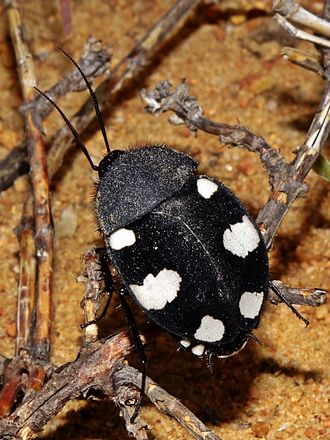Archotermopsidae

Archotermopsidae is a family of termites in the order Blattodea, known as dampwood termites, formerly included within the family Termopsidae. They constitute a small and rather primitive family with five extant genera and 13–20 living species.[1][2] They may be a nuisance, but compared to the drywood termites (Kalotermitidae), usually do not cause extensive damage to buildings or other man-made structures. As their name implies, they eat wood that is not dried out, perhaps even rotting, and consequently of little use to humans.
In 2009, the five extant genera from the family Termopsidae (Archotermopsis, Hodotermopsis, Porotermes, Stolotermes, and Zootermopsis) were moved to a newly created family, Archotermopsidae[3][4][5] (Zootermopsis had previously been treated as part of the family Hodotermitidae),[6] so that the family Termopsidae now includes only fossil taxa: Asiatermes, Huaxiatermes, and Mesotermopsis (Early Cretaceous of China); Cretatermes carpenteri (Upper Cretaceous of Labrador); Lutetiatermes prisca (Upper Cretaceous amber of France); Paleotermopsis oligocenicus (Upper Oligocene of France); Parotermes insignis (Oligocene of Colorado); and Valditermes (incertae sedis).[3][4][1] The genera Porotermes and Stolotermes were later placed into a separate family, Stolotermitidae.[7]
Termites are pale-coloured, soft-bodied eusocial insects that live in colonies, whereas cockroaches are darker-coloured (often brown), sclerotized, segmented insects. Within the colony, termites have a caste system, with a pair of mature reproductives, the king and the queen, and numerous sterile workers and soldiers. The cockroaches are not colonial but do have a tendency to aggregate and may be considered pre-social, as all adults are capable of breeding. Other similarities between the two groups include various social behaviours, trail following, kin recognition and methods of communication.
Cladistic analysis of five DNA sequences in 107 species representing all the termite subfamilies, all six cockroach families, including 22 of the 29 subfamilies, and five of the 15 mantis families (as out-groups) showed that the termites are nested within the cockroaches, and that the Cryptocercidae is a sister group to the termites. The mantids were shown to be the sister group to Blattodea.[2] Cryptocercus also shares characteristics such as species of gut bacteria with the termites.[3]
The cockroach families Lamproblattidae and Tryonicidae are not shown but are placed within the superfamily Blattoidea. The cockroach families Corydiidae and Ectobiidae were previously known as the Polyphagidae and Blattellidae.[4][5]
The evolutionary relationships of the Blattodea (cockroaches and termites), based on Eggleton, Beccaloni & Inward (2007) and modified by Evangelista et al. 2019, are shown in the cladogram:[6][7]
The cladogram shows the family Alienopteridae (originally assigned to its own order “Alienoptera”) as sister to Mantodea; while it was reassigned to the extinct Blattodea superfamily Umenocoleoidea by Vršanský et al.,[8] a more recent analysis places Alienopteridae and Umenocoleidae as sister taxa within Dictyoptera, and not within Blattodea.[9]
